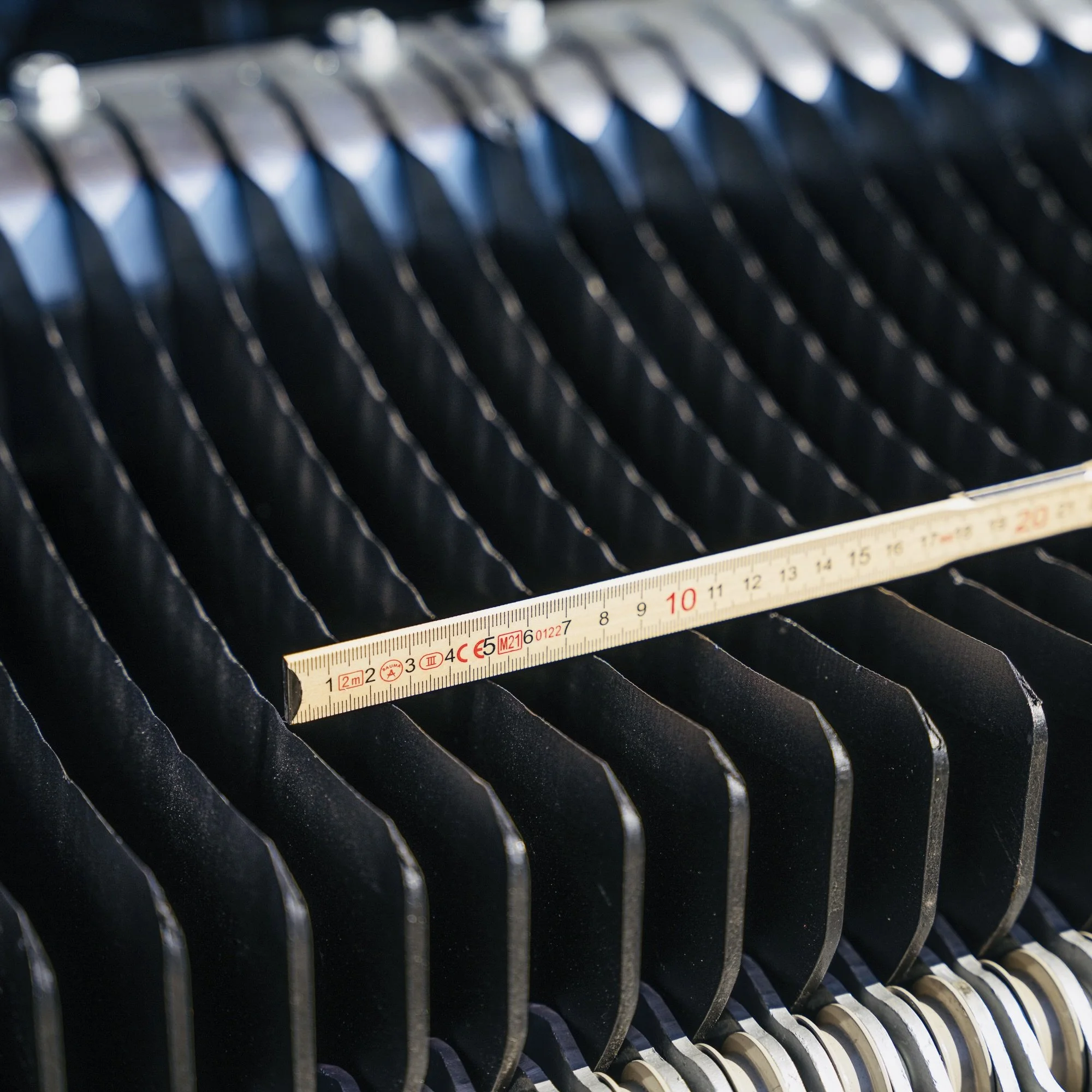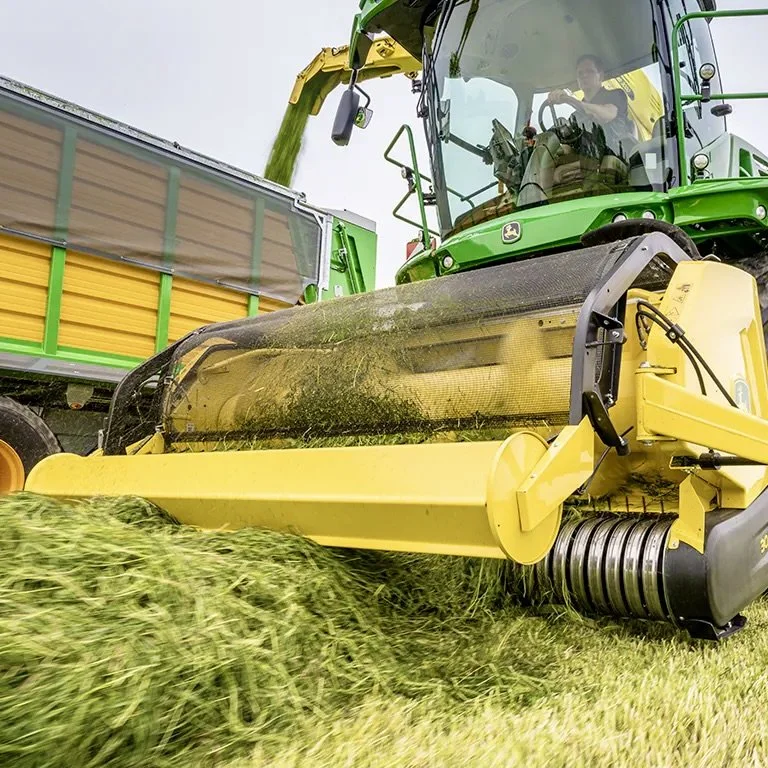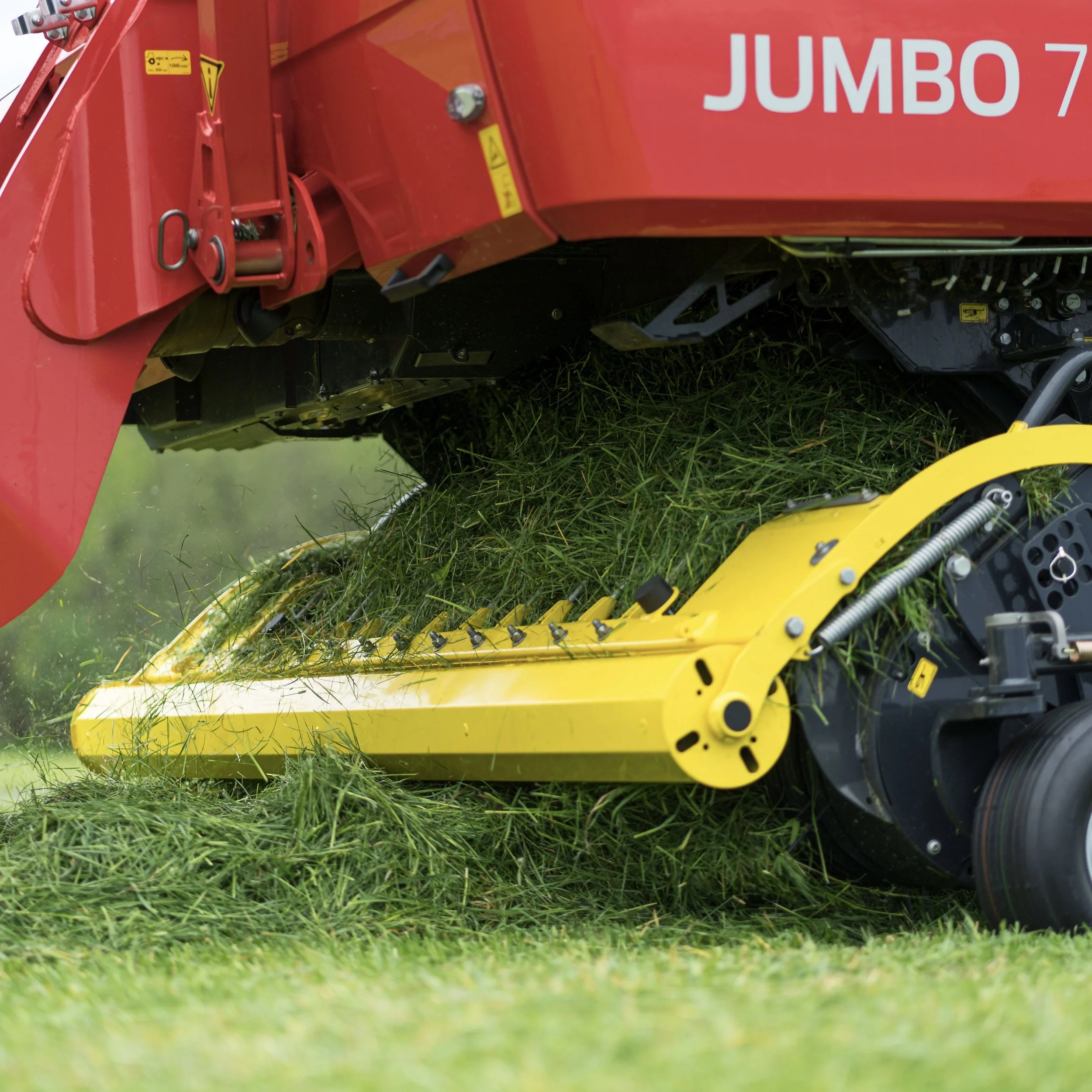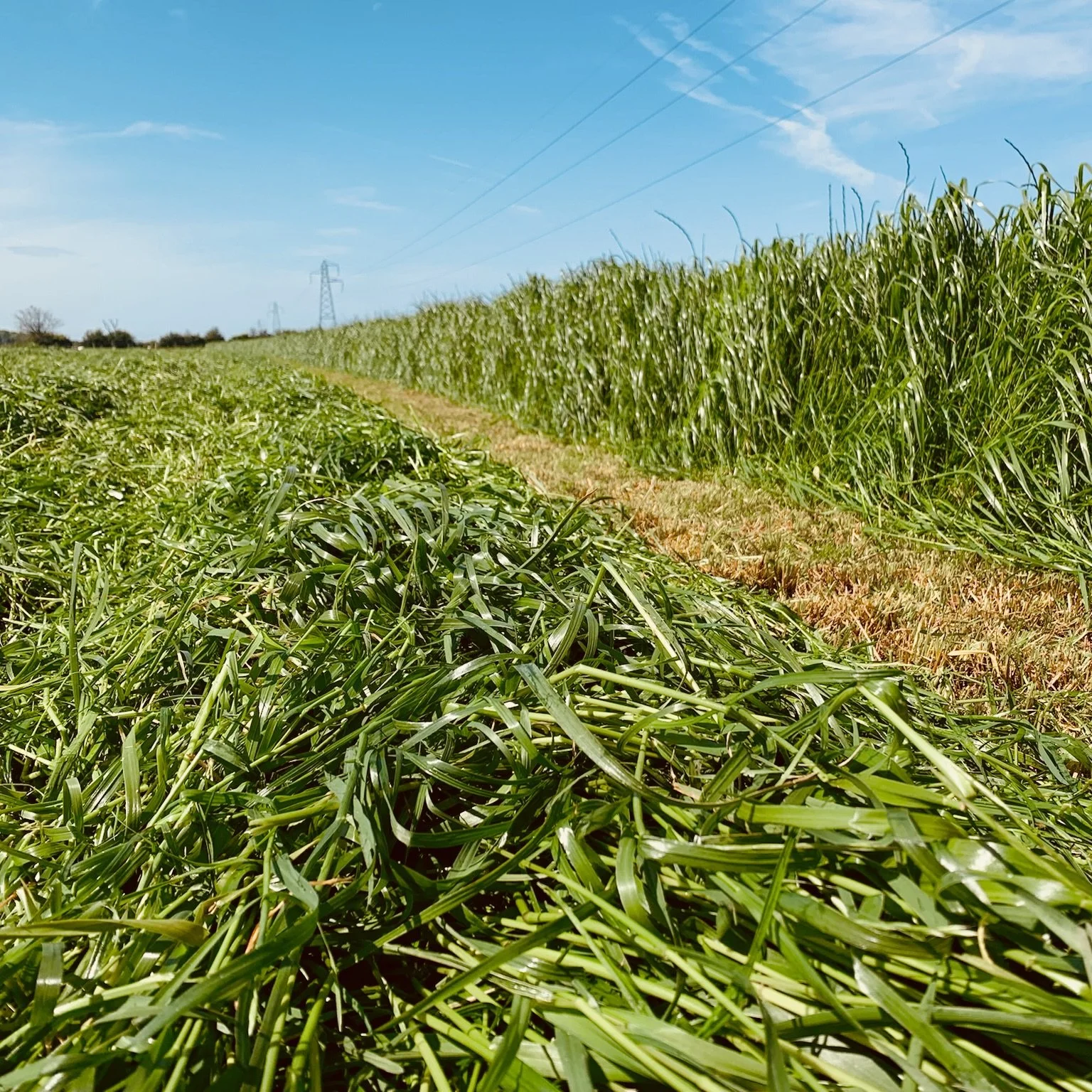What is theoretical chop length of silage?
You might have seen several manufactures trumpeting their latest shiny painted metals’ theoretical length of chop or TLOC. But what is the difference between a forage harvesters theoretical and actual length of chop and why isn’t the silage tipped in the clamp the same as the pretty pictures in the brochure?
The phrase “in theory” is usually carefully placed just in front of something that “just isn’t” going to happen. It’s a coverall to portray what’s actually the very best outcome you might expect. In theory this might make sense, but it actually won’t, so let's explain it and why it matters when it come to length of chop.
Why length of chop matters
There are other articles in this series that cover chop length in more detail, but in essence, the length of chop is really important to get the forage consolidation right and to limit the gas porosity of the silage. Why does this matter? Because it means your silage will last longer once it’s unwrapped if you get it right. If you get it wrong, 40% of your nutrients can vanish in front of your eyes. And getting it wrong is generally getting it too long. Getting it wrong and being too short will still make good silage but will cost a load of time and diesel - so you want to avoid that too.
The difference in chop length between crops
The target length of chop depends dry matter of the crop but the actual length of chop will also depend on the crop. Maize actual chop lengths tend to be much closed TLOC than say a multi cut grass crop - but why is that? Well it’s all to do with presentation, oh and the machine that chops it.
Pottenger knives in both forage wagons and balers
To consider the machine, you need to look at the two fundamentally different ways of chopping a forage crop. There are really only two options, stationary or moving knives. Stationary knives are typical in forage wagons and chopper balers. The crop is pushed past, or between, the knives by a high speed rotor. Moving knives are usually only found in “precision” chop forage harvesters, either trailed or self propelled.
Forage harvester theoretical length of chop
Moving knives inside a forage harvester are fixed to a rotating drum or flywheel and cut against a stationary knife or shear bar. This system, when cutting something like maize will achieve actual chop lengths closest to the theoretical lengths. The theoretical length is a calculation of the time gaps between the speed of the knife drum and the speed of feed rollers.
Imagine a single maize stalk being feed between the feed rollers - but in slow motion. The stalk is constantly inching forward but the blades or knives on the drum keep chopping the end off it. The faster the stalk is pushed forward, the more of it gets through before the next blade chops the end off, so the longer the chop length. The theoretical chop length is just the distance the feed rollers push the crop in before the next knife arrives on the rotating drum.
If the feed rolls are driven off a stepped speed gearbox, then you get set chop lengths. Varying the number of blades in the drum or installing “half knives” give you another set of variables. So it’s fairly easy to calculate the theoretical chop lengths, but how come some of the crop is chopped longer than this?
Some of the really light dry leaves can get sucked up over the drum by the updraft of the blower (and processor) leading to longer, unchopped stuff in the trailer but this isn’t the main reason chop lengths vary. Crop presentation is the most common issue, and one you can’t really avoid, even in a perfectly set up machine. Let’s think again about the maize, the long stalks generally end up going in head first or feet first into the feeder house. This means the crop is mostly presented to the cutting drum at 90 degrees to the knife. Now think about some tedded and rowed up short grass, the actual stalks of grass will be presented to the dum in a tangle. Some at 90 degrees, some at 45 and some parallel to the knife. This means the actual chop lengths will vary depending on how the stalks are presented. If the crop were all parallel to the drum, the crop would hardly be chopped at all!
John Deere’s new 30R grass header
Forage wagon theoretical chop lengths
The theoretical chop length in a forage wagon is really easy to calculate. It's just the actual gap between each of the knives. The crop get pushed through this gap by the rotor and the crop has to fit through the gap to get in to the body of the machine. So why isn’t it all chopped to this theoretical length?
Well again it's all down to the crop presentation. The knives in the wagon are set at 90 degrees to those in a harvester. They cut in the same line as the swath so if the stalks were feed straight, in line with the swath, they could (in theory) pass between the knives without being cut at all! But as described above, that’s unlikely because the crop is likely to be tangled, so it’s presented in all sorts of angles.
Pottengers’ award winning Jumbo 7000 forage wagon
What’s better, forage wagon or harvester?
In tests, harvesters produce forage that’s chopped closer to the theoretical length than a wagon - it’s a fact - but why? Well this is mostly because the machines all run the same way across the ground. The mowers, tenders and rakes all lift and then drop the crop. As they do this they are moving forward so the falling crop tends to fall in the direction of the swath. It’s not 100% but most of the stalks lie in the swath in the same direction as the swath; go and have a look to check!
Grass stalks mostly in line with the swath
This crop orientation means it’s more suitable to a harvester that has its knives cutting at 90 degrees to the swath rather than the wagon that has its knives inline with the swath.
Tests - what tests?
Sieve test are the best way to check this. A tower of sieve trays stacked one on top of another, each one with a wire mesh finer than the one above. The forage is tipped in the top and the stack shaken; then the contents of each tray are weighed to get a spread of chop lengths. Harvesters are consistently more consistent than wagons.
But we all know there are machines, and there are machines. Some manufactures will publish their “sieve test results” others have their machines tested by the DLG and some have machines tested and published in Profi magazine. These results give you a good indication of what any particular machine is capable of. Only some of the real world difference is down to design, most of it has to do with machine set up and maintenance. To make sure you get more of your crop chopped at the theoretical lengths, you need to make sure the cutting edges are sharp and the tolerances set correctly. This will also boost output and minimise fuel uses too.
If you want to know more about achieving the target chop length for your silage or would like to discuss any other aspects covered in this series, contact me at jeremy@silageconsultant.co.uk




